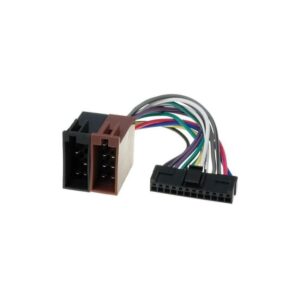Can NFC Business Cards Replace Printed Brochures or Flyers?
Introduction In today’s fast-changing world, the way we share information is evolving rapidly. Printed brochures and flyers have been the...

Introduction
In today’s fast-changing world, the way we share information is evolving rapidly. Printed brochures and flyers have been the go-to marketing tools for decades, helping businesses promote products, services, and events. However, with technology advancing every day, new methods are gaining popularity. One such innovation is the NFC business card. The question many are now asking is simple but important: can NFC business cards truly replace traditional printed brochures or flyers? Let’s dive deep into the heart of this exciting discussion.
What Are NFC Business Cards?
NFC, or Near Field Communication, is a wireless technology that allows devices to exchange information when they are close together. An NFC business card is embedded with a tiny chip that can instantly share information like websites, portfolios, contact details, or promotional materials with a simple tap on a smartphone. It’s almost magical—no apps to download, no QR codes to scan. Just a smooth, instant connection between a business and its potential customer.
These cards bring a futuristic feel to networking. They look and feel like regular cards, but they carry much more power inside. A tap can offer a rich, interactive experience far beyond what a paper card can provide.
Traditional Brochures and Flyers: A Quick Look
For a long time, brochures and flyers have been staples in marketing. Whether it’s a glossy trifold showcasing a luxury hotel or a vibrant flyer promoting a weekend event, printed materials have a way of creating a tangible connection. They can be touched, felt, and even smelled, offering a sensory experience that digital formats sometimes struggle to replicate.
Moreover, printed brochures and flyers can be designed to leave a strong visual impact. From bold colors to creative layouts, they are crafted to capture attention and stick in memory. They are perfect for giving quick information, detailed descriptions, or storytelling in a way that feels personal and traditional.
The Rise of NFC Technology in Networking
As smartphones have become a central part of our lives, technologies like NFC have found their place in daily interactions. Business networking, in particular, has seen a shift. Instead of exchanging stacks of paper, many professionals now prefer the seamless experience of tapping an NFC card.
The shift isn’t only about being “tech-savvy.” It’s about efficiency, eco-friendliness, and making a stronger first impression. With an NFC card, you’re not just handing over contact details; you’re offering a doorway to your entire professional presence—your website, LinkedIn profile, portfolio, videos, and more—all updated in real-time.
In an age where people expect fast and smart experiences, NFC business cards match the mood perfectly.
Benefits of NFC Business Cards Over Printed Materials
One of the most obvious advantages of NFC business cards is their sustainability. In a world increasingly concerned about the environment, cutting down on paper waste is more important than ever. A single NFC card can replace hundreds, even thousands, of printed flyers or brochures, offering a greener solution without sacrificing effectiveness.
Another major benefit is flexibility. Need to change your contact information? With a printed brochure, you’d have to reprint everything. With an NFC card, updates happen instantly through a dashboard or app. This flexibility makes NFC cards not just smart but also highly practical.
Additionally, NFC cards can provide a richer experience. Instead of static images and limited space, you can share videos, presentations, and interactive content. This creates a stronger emotional connection and offers much more information than any printed flyer ever could.
Lastly, from a branding perspective, handing someone an NFC business card sends a message: you are innovative, forward-thinking, and prepared for the future. That impression can be worth far more than any glossy print.
Challenges NFC Business Cards Face
Despite all their advantages, NFC business cards are not without challenges. First and foremost is accessibility. Not everyone has an NFC-enabled smartphone, although the number is steadily increasing. If a potential client cannot access your information with a tap, you might still need a backup plan, like a traditional card or flyer.
Cost is another consideration. While a box of printed flyers can be produced relatively cheaply, NFC cards usually involve a higher upfront investment. For small businesses or startups, this can be a significant barrier.
There’s also the emotional factor. Some people love the feel of a beautifully designed brochure in their hands. Printed materials can evoke nostalgia, trust, and seriousness that a digital tap might not fully replicate. In certain industries—like luxury goods, real estate, or high-end hospitality—the tactile experience of holding a brochure still holds great value.
And let’s not forget about technological glitches. If the NFC chip fails or the phone doesn’t register the tap correctly, the sleek experience can quickly turn awkward.
Future Trends: A Blend of Digital and Physical
Rather than thinking about NFC cards and printed materials as rivals, a more realistic vision of the future might involve a blend of both. Smart marketers are already combining digital innovations with traditional materials. Imagine receiving a printed brochure embedded with an NFC tag, combining the best of both worlds: the tactile beauty of print with the interactive depth of digital.
Hybrid solutions could soon become the norm. Printed flyers might lead to a landing page where customers can watch a video, sign up for a newsletter, or place an order—all triggered by a tap. Businesses that embrace both mediums smartly will likely stand out in the crowded marketplace.
The real magic will come from understanding when to use digital, when to use print, and how to make them complement each other seamlessly.
Conclusion
Digital business cards are undoubtedly reshaping the way we connect and share information. They offer speed, versatility, and an eco-friendly approach that fits perfectly with the modern world’s demands. However, replacing printed brochures and flyers completely is unlikely to happen overnight. Printed materials still offer a sensory and emotional experience that digital alternatives can’t fully duplicate.
The smartest approach for businesses might not be an either-or decision but a both-and strategy. By blending the timeless appeal of printed materials with the futuristic power of NFC technology, brands can create richer, more memorable experiences for their audiences.
As technology continues to evolve and consumer behaviors shift, staying flexible and embracing innovation—while respecting the classics—might just be the ultimate key to success.





